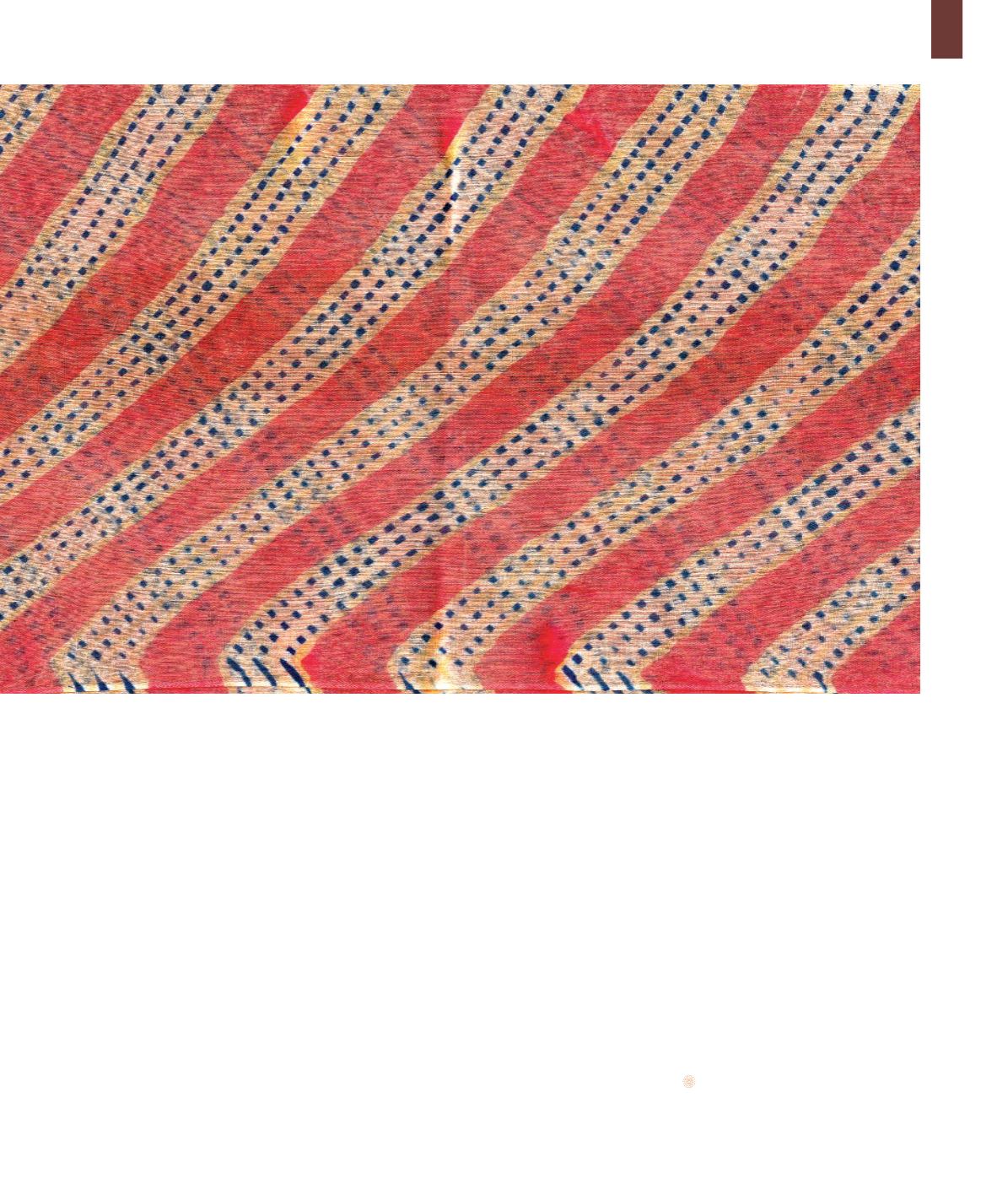
93
Apart from creating tie-dye on unstitched cloth
such as sarees, shawls, dupattas and yardage,
I also create tie-dye for stitched fabrics. This
gives a wonderful customised appeal to the
attire as a particular design can be worked
on the yoke, collars, button panel or cuffs
of a garment. My tie-dyed textiles have been
appreciated by textile lovers and buyers from
different countries. Buyers from overseas
are particular about design and colours of
textiles. Their requirements depend on their
culture and climate. It is interesting to note
the preferences of design and colour by
buyers in different countries and create textiles
for them accordingly. The Japanese are the
biggest buyers of tie-dyed textiles and are very
particular about authentic, certified colours
being used on the textiles. We ensure these
requirements, apart from meeting their design
and colour preferences are met.
In the past six decades I have seen an increase
in demand for tie-dyed textiles. Once created
only for traditional wear for men and women,
it is now worked on Western apparel, yardage
and home furnishings. Rajasthan is full of
colour and tie-dyed fabrics continue to be part
of its vibrant society. During the festival of
Teej, that celebrates the union of Lord Shiva
and Goddess Parvati, women wear specially-
patterned Lehariya attire. Lehariya turban
cloths are also worn by men during weddings,
festivals, ceremonies and special occasions.
Tie-dyed fabrics and attire are the identity of
Rajasthan. My family and I are happy to be part
of this treasured tradition.


